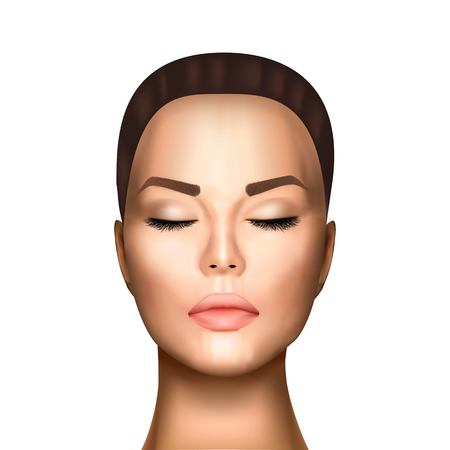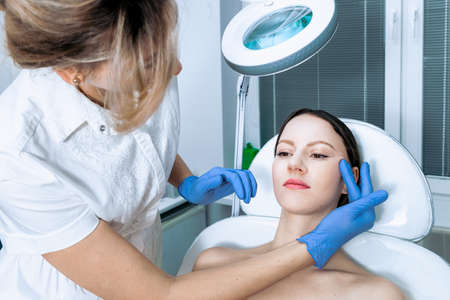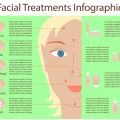Understanding Facial Contouring Injectables
Facial contouring injectables have become a popular solution for those looking to combat signs of aging without surgery. These treatments can help restore volume, enhance facial features, and smooth out wrinkles, giving a more youthful appearance. In the United States, there are two main categories of injectables used for facial contouring: dermal fillers and neurotoxins. Both have been rigorously tested and approved by the FDA, ensuring safety and effectiveness when administered by trained professionals.
Dermal Fillers
Dermal fillers work by adding volume beneath the skin’s surface, which helps to fill in lines, soften creases, and enhance contours. The most commonly used dermal fillers in the US are made from hyaluronic acid (HA), a naturally occurring substance in the body that attracts moisture and gives skin its plumpness. Popular FDA-approved brands include:
| Brand Name | Main Ingredient | Common Uses |
|---|---|---|
| Juvéderm® | Hyaluronic Acid | Lips, cheeks, nasolabial folds |
| Restylane® | Hyaluronic Acid | Lips, cheeks, under-eye hollows |
| Radiesse® | Calcium Hydroxylapatite | Cheeks, jawline, hands |
| Sculptra® | Poly-L-lactic Acid | Cheeks, temples, chin |
Neurotoxins (Botulinum Toxin)
Neurotoxins work differently from fillers—they relax specific facial muscles to reduce the appearance of dynamic wrinkles caused by expressions like smiling or frowning. By temporarily blocking nerve signals to these muscles, neurotoxins smooth out fine lines and prevent deeper wrinkles from forming. The most well-known neurotoxin brands FDA-approved in the U.S. are:
| Brand Name | Main Ingredient | Common Uses |
|---|---|---|
| BOTOX® Cosmetic | Botulinum Toxin Type A | Crow’s feet, forehead lines, frown lines (glabellar lines) |
| Dysport® | Botulinum Toxin Type A | Frown lines between the eyebrows (glabellar lines) |
| Xeomin® | Botulinum Toxin Type A | Crow’s feet, forehead lines, frown lines (glabellar lines) |
| Jeuveau® | Botulinum Toxin Type A | Frown lines between the eyebrows (glabellar lines) |
The Importance of FDA Approval in the U.S.
The U.S. Food and Drug Administration (FDA) approval means these products have undergone strict testing for safety and effectiveness. When choosing an injectable treatment for facial contouring or anti-aging, it’s important to look for practitioners who use only FDA-approved brands. This ensures you’re getting high-quality products that meet rigorous American health standards.
The Bottom Line on Types of Injectables for Anti-Aging Facial Contouring in America
If you’re considering facial contouring injectables as part of your anti-aging strategy, understanding the different types of products—especially those trusted and widely used across the United States—can help you make informed decisions about your treatment options.
2. The Science Behind Aging and Facial Volume Loss
Understanding the Biological Processes of Facial Aging
Aging is a natural process, but it affects everyone differently—especially when it comes to our faces. Over time, a combination of biological changes leads to visible signs of aging, like sagging skin, wrinkles, and loss of facial fullness. To understand how facial contouring injectables help with anti-aging, its important to first explore the science behind these changes.
Key Factors Contributing to Facial Aging
| Process | Description | Visible Effects |
|---|---|---|
| Collagen Breakdown | As we age, our bodies produce less collagen and elastin—proteins that keep skin firm and elastic. | Wrinkles, fine lines, and loose skin |
| Fat Redistribution | The fat pads under the skin shift downward and decrease in volume over time. | Hollow cheeks, sunken temples, and under-eye bags |
| Bone Resorption | The facial bones gradually lose density, especially around the eyes, jawline, and mouth. | Changes in face shape, drooping features, deeper folds |
How These Changes Impact Your Appearance
The breakdown of collagen means your skin cant bounce back like it used to, leading to a crepey texture and more pronounced wrinkles. Fat redistribution creates hollows where there was once youthful fullness—think about how children have rounder cheeks compared to adults. Bone resorption further alters the foundation of your face, making everything appear less lifted.
Why Addressing Volume Loss Matters in Anti-Aging Treatments
Many traditional skincare products focus on treating the surface of the skin. However, because aging also happens beneath the skin—involving fat pads and bone structure—surface treatments alone arent enough for significant results. Thats why facial contouring injectables are so effective; they work by restoring lost volume and support from within, directly addressing these key biological changes.

3. How Injectables Counteract Visible Signs of Aging
The Science Behind Facial Contouring Injectables
Facial contouring injectables, such as dermal fillers and neuromodulators like Botox, have become popular tools in the fight against visible signs of aging. As we age, our skin loses collagen, fat, and elasticity. This leads to wrinkles, sagging, and a hollowed appearance in areas like the cheeks and under the eyes. Contouring injectables target these issues by restoring lost volume, smoothing lines, and improving skin texture.
Restoring Volume for a Youthful Look
One of the most noticeable effects of aging is volume loss. Injectable fillers made from hyaluronic acid or calcium hydroxylapatite can replace this lost volume. They are commonly used to plump up cheeks, fill under-eye hollows, and add definition to the jawline and chin. By replenishing these areas, injectables can create a more youthful facial structure.
| Area Treated | Injectable Type | Main Benefit |
|---|---|---|
| Cheeks | Hyaluronic Acid Filler | Restores fullness & lift |
| Lips | Hyaluronic Acid Filler | Adds volume & shape |
| Jawline/Chin | Calcium Hydroxylapatite Filler | Enhances definition |
| Tear Troughs (under eyes) | Hyaluronic Acid Filler | Reduces hollowness & dark circles |
Smoothing Wrinkles and Fine Lines
Dynamic wrinkles form due to repetitive muscle movement—think crow’s feet or forehead lines. Neuromodulators like Botox relax these muscles, which softens existing lines and prevents new ones from forming. Meanwhile, certain fillers can be injected directly into deeper wrinkles to smooth them out instantly.
Comparing Results: Fillers vs. Botox
| Treatment Type | Main Use | Typical Duration |
|---|---|---|
| Dermal Fillers | Adds volume & fills static wrinkles | 6-18 months (varies by product) |
| Botox (Neuromodulator) | Smooths dynamic wrinkles by relaxing muscles | 3-4 months per treatment |
Improving Skin Texture and Elasticity
Certain advanced injectables stimulate collagen production over time. Products like Sculptra encourage your body to rebuild its own collagen, gradually improving skin firmness and texture even after the initial filler effect fades. This approach offers natural-looking results that develop over several months.
Clinical Evidence & Real-World Outcomes
A variety of clinical studies support the effectiveness of facial contouring injectables for anti-aging:
- A 2020 study published in the Journal of Cosmetic Dermatology found that patients treated with hyaluronic acid fillers saw significant improvements in facial volume and wrinkle reduction for up to one year.
- The American Society for Dermatologic Surgery reports that more than 90% of patients are satisfied with their injectable results, noting improved confidence and a natural look.
- Many real-world before-and-after photos show smoother skin texture, restored contours, and reduced lines without surgery or downtime.
By understanding how injectables work—restoring volume, smoothing wrinkles, and stimulating collagen—patients can make informed choices about their anti-aging treatments based on both scientific evidence and actual patient experiences.
4. Popular Treatment Areas and Customization Options
Facial contouring injectables have become a top choice for many Americans looking to achieve a youthful, refreshed look without surgery. Let’s explore the most popular treatment areas in the U.S. market and how skilled practitioners customize each procedure for individual facial structures.
Commonly Treated Facial Areas
| Area | Purpose of Injectable Treatment |
|---|---|
| Cheeks | Restores volume, lifts sagging skin, and creates a fuller, more youthful appearance |
| Jawline | Defines jaw contours, reduces the appearance of jowls, and enhances overall facial symmetry |
| Chin | Adds projection, balances profile, and sharpens the lower face for a more harmonious look |
| Nasolabial Folds (Smile Lines) | Smooths deep creases running from nose to mouth, softening signs of aging |
| Tear Troughs (Under Eyes) | Reduces hollows and dark circles for a rested, revitalized effect |
Personalized Approaches to Facial Anatomy
No two faces are exactly alike—this is why American aesthetic providers emphasize personalized treatment plans. Before any injections, practitioners assess each patient’s bone structure, skin type, age-related changes, and unique goals. Here’s how customization works:
- Individual Mapping: Practitioners use facial analysis techniques to identify where volume has been lost or where definition can be improved.
- Product Selection: Different injectables (like hyaluronic acid fillers or collagen stimulators) are chosen based on the area being treated and the desired outcome.
- Dose Adjustment: The amount of product injected is carefully tailored—less for subtle enhancements, more for significant lifting or contouring.
- Layered Techniques: Providers may use multiple types of fillers in various facial layers to achieve natural results that move with your expressions.
The Importance of Communication with Your Provider
A key part of successful facial contouring is open communication between you and your provider. Bringing reference photos, discussing your anti-aging goals, and understanding what’s possible with injectables helps ensure that your results are both natural-looking and aligned with your expectations.
5. Safety, Recovery, and What to Expect During Treatment
Understanding the Safety of Facial Contouring Injectables
Facial contouring injectables—like dermal fillers and neurotoxins (such as Botox)—are widely used in the U.S. for anti-aging purposes. When performed by a qualified and experienced provider, these treatments are generally considered safe. The products used are FDA-approved for cosmetic use, and providers follow strict safety protocols to minimize risks.
Common Safety Measures
- Consultation to review medical history and allergies
- Sterilization of tools and treatment area
- Use of high-quality, approved injectables
- Following proper injection techniques to avoid complications
Potential Side Effects
While facial injectables have a strong safety record, some side effects can occur. Most are mild and temporary, but patients should be aware of what to expect:
| Side Effect | Description | How Common? |
|---|---|---|
| Redness & Swelling | Mild irritation or puffiness at injection sites | Very common, usually resolves within hours to days |
| Bruising | Small bruises from needle insertion | Common, fades within a week |
| Tenderness | Sensitivity in treated areas | Common, subsides quickly |
| Lumps or Bumps | Tiny lumps under skin; often massage helps resolve them | Occasional, temporary |
| Allergic Reaction* | Rare swelling or itching due to allergy to ingredients | Very rare, immediate medical attention needed if severe symptoms occur |
*Serious complications are extremely rare when injectables are administered by licensed professionals.
Typical Downtime and Recovery Process
The recovery process for facial contouring injectables is typically minimal compared to surgical options. Most people can return to daily activities immediately after treatment. Here’s what you might experience:
- No required downtime: Most patients leave the clinic and resume normal routines right away.
- Avoid strenuous exercise: For 24 hours post-treatment to reduce swelling or bruising risk.
- Avoid alcohol and blood thinners: Before and after injections to prevent excessive bruising.
- Cautious skin care: Avoid heavy makeup or facial massages for at least one day.
Recovery Timeline Overview
| Time After Injection | What to Expect |
|---|---|
| First 24 Hours | Mild redness/swelling; avoid touching or massaging treated areas. |
| 1-3 Days Post-Treatment | Puffiness or minor bruising may persist; visible results start appearing. |
| 1 Week Later | Most side effects resolved; full results visible. |
Setting Realistic Expectations for Results in the U.S.
The effects of facial contouring injectables are not permanent. Depending on the product used and individual metabolism, results generally last from six months up to two years. Many Americans opt for maintenance treatments every few months to keep their youthful look. While these procedures can smooth wrinkles, restore volume, and enhance contours, it’s important for patients to communicate openly with their provider about their goals and limitations of the treatment. Realistic expectations lead to higher satisfaction with results.
Main Points for Patients:
- Treatments are quick—often less than an hour.
- Mild side effects are normal and short-lived.
- No major downtime is expected.
- Your provider will give you aftercare instructions tailored to your needs.
- If you have concerns or unusual symptoms after your procedure, contact your provider promptly.
If you’re considering facial contouring injectables as part of your anti-aging strategy, understanding the safety profile, possible side effects, and recovery process will help ensure a positive experience that matches your expectations.
6. Choosing a Qualified Injector in the United States
When considering facial contouring injectables for anti-aging, one of the most important steps is choosing a qualified injector. In the United States, there are clear guidelines and best practices to ensure patient safety and satisfaction. Here’s what you need to know before booking your appointment.
Why Board Certification Matters
Board certification ensures that your injector has undergone rigorous medical training and meets high standards set by recognized medical boards such as the American Board of Plastic Surgery or the American Board of Dermatology. Certified professionals understand facial anatomy deeply, which reduces risks and improves results with facial contouring injectables.
Experience Counts
Beyond board certification, hands-on experience with injectables is crucial. An experienced injector can assess your unique facial structure, recommend appropriate products, and use advanced techniques to achieve natural-looking results. Ask potential providers about their years of practice and how often they perform these procedures.
Questions to Ask During Your Consultation
| Question | Why It’s Important |
|---|---|
| Are you board-certified in dermatology or plastic surgery? | Ensures formal training and expertise in facial anatomy. |
| How many years have you been performing facial injectables? | Experience leads to better judgment and technique. |
| Can I see before-and-after photos of your patients? | Gives insight into the injector’s skill and aesthetic style. |
| What brands of injectables do you use? | High-quality, FDA-approved products are safest. |
| What should I expect during recovery? | A knowledgeable provider will explain aftercare clearly. |
U.S. Best Practices for Patient Safety
- Treatment Environment: Procedures should be performed in a licensed medical office or clinic—not at home parties or salons.
- Sterile Technique: All equipment should be sterile, and the injector must follow strict hygiene protocols to prevent infections.
- Comprehensive Consultation: A reputable injector will review your medical history, discuss risks, set realistic expectations, and answer all your questions.
- No Pressure Policy: Ethical providers never pressure you into unnecessary treatments or upsell services you don’t need.
Red Flags to Watch Out For
- Lack of certification or unwillingness to share credentials.
- No before-and-after portfolio available for review.
- Bargain pricing that seems too good to be true—it often is.
- No consultation prior to treatment or rushed appointments.
- Treatments offered outside of a proper medical setting.
Your Path to Safe and Satisfying Results
Selecting a qualified injector according to U.S. standards helps minimize risks and maximize the benefits of facial contouring injectables for anti-aging. Do your homework, ask the right questions, and always prioritize safety over convenience or cost for the best possible outcome.


